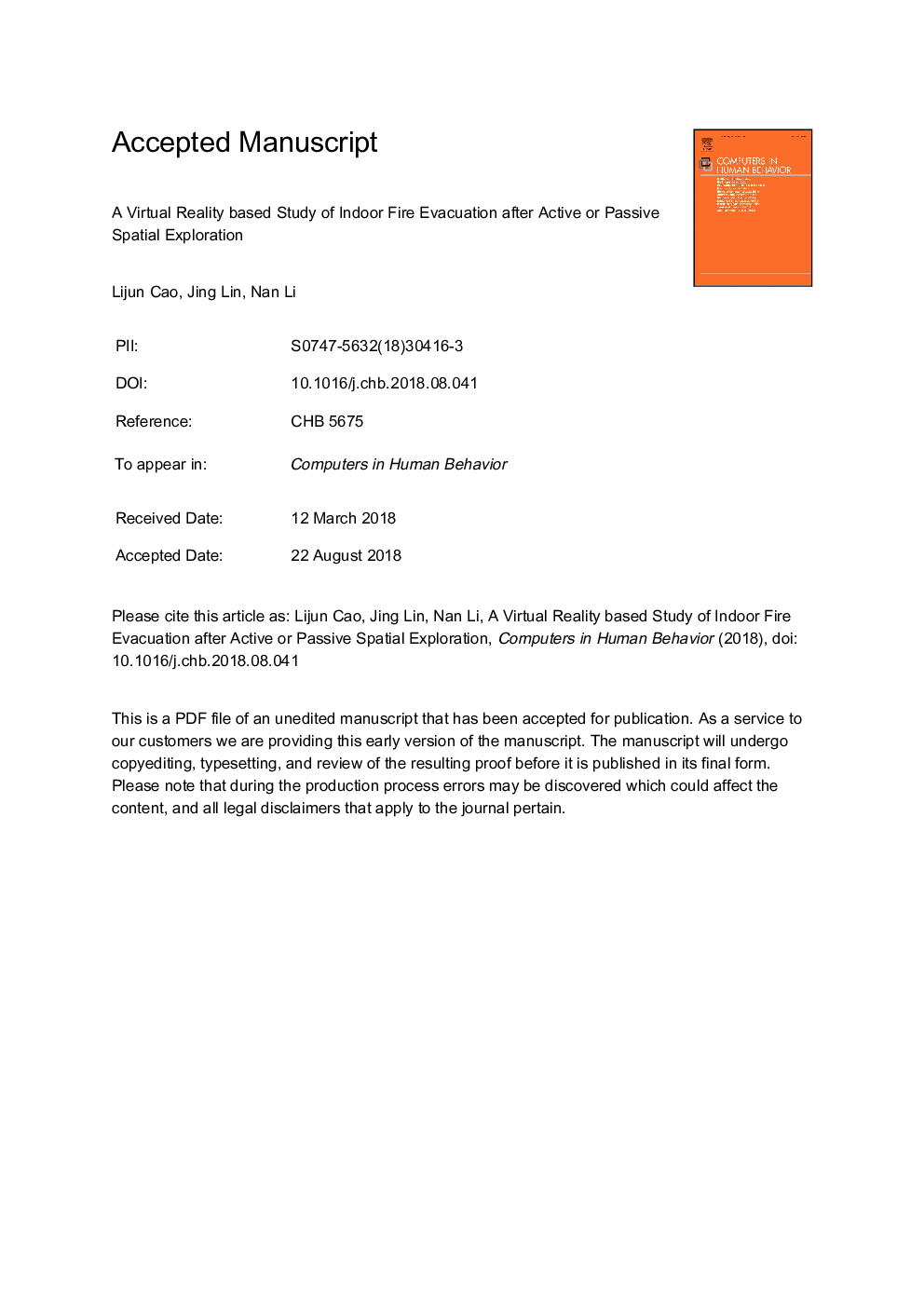| Article ID | Journal | Published Year | Pages | File Type |
|---|---|---|---|---|
| 10132540 | Computers in Human Behavior | 2019 | 37 Pages |
Abstract
Here we report a study designed to examine the influence of spatial exploration mode on people's wayfinding performance during a building fire emergency. Using immersive virtual environments, we asked the participants to actively or passively explore a virtual museum to look for hidden treasure keys and then a treasure point. Half of the participants were asked to exit from a virtual museum during a virtual fire emergency after they had actively or passively explored the museum, whereas the other half of the participants were asked to complete the same task under the control condition without the virtual fire. Importantly, both the active and passive exploration conditions allowed the participants to control their own movement, whereas only those under the active exploration condition had the opportunity to make route decisions. Compared to those who explored the virtual museum passively, the participants did it actively traveled longer in completing the egress task. The results also revealed that participants under the fire emergency condition spent more time in finding their way to exit the museum than those under the control condition, and rated the evacuation task to be more difficult. The underlying mechanisms of these findings were discussed.
Related Topics
Physical Sciences and Engineering
Computer Science
Computer Science Applications
Authors
Lijun Cao, Jing Lin, Nan Li,
